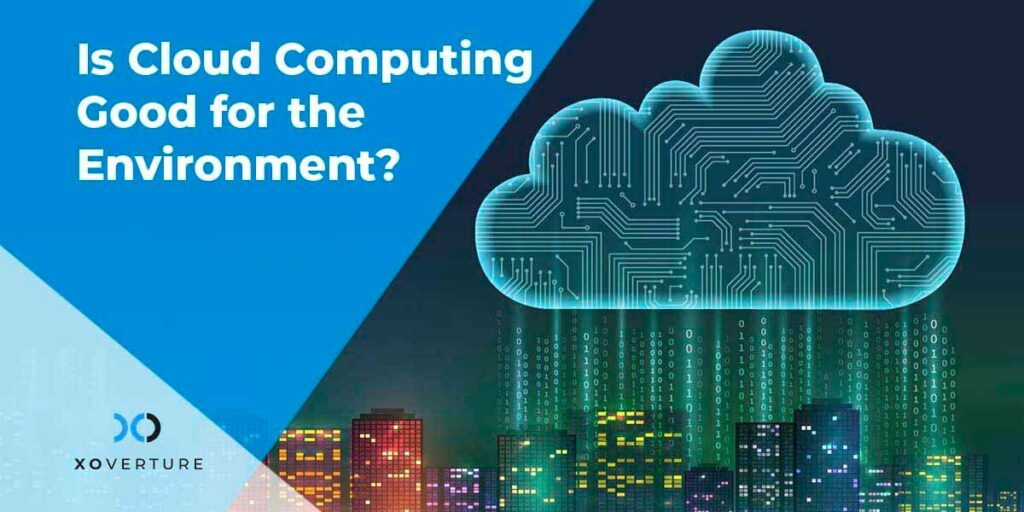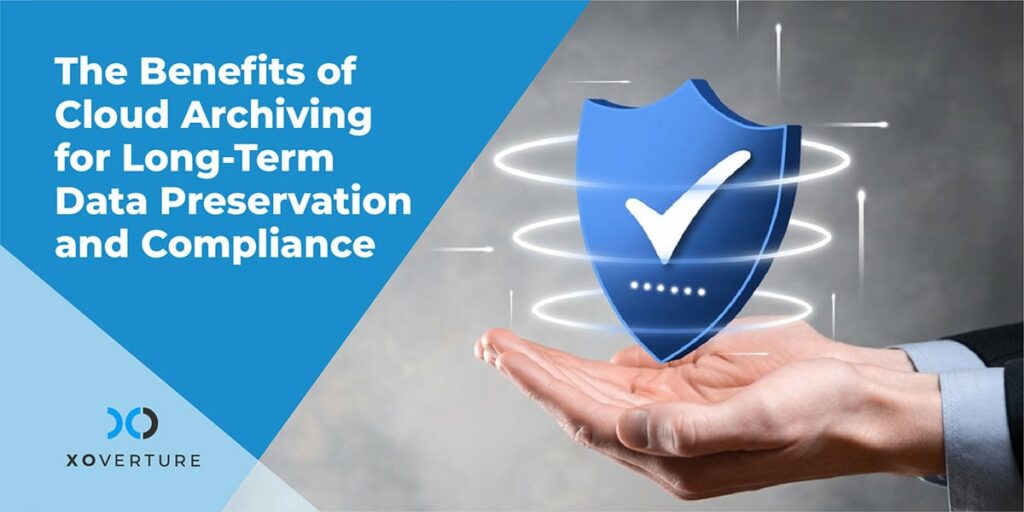Cloud computing is basically computing that takes place in a data center. It’s different from old-school data centers in many ways, including that it allows multiple businesses to use the same physical hardware in a way that preserves security and privacy, and lets you provision new resources across physical devices in a matter of seconds.
The data centers for the largest public clouds such as Amazon Web Services (AWS) and Microsoft Azure are some of the largest ever built. Each one includes thousands of servers that use up a lot of energy. And yet, cloud computing actually is good for the environment when you look at the bigger picture. We’ll explain why below.
But first let’s start by clarifying exactly what cloud computing is.
What Is Cloud Computing?
Cloud computing is an on-demand access to computing resources like applications, both physical and virtual servers, data storage capability, development tools, and networking capabilities, that are hosted remotely in a data center controlled by a cloud services provider. These are accessible via the internet (or CSP), who charges a monthly subscription fee for these resources or bills them based on usage.
How the Cloud Is Good for the Environment
According to a study, cloud computing adoption might result in a 38 percent reduction in energy consumption in the world’s data centers by 2020. The report estimates that cloud computing will reduce energy usage from 201.8 terawatt-hours today to 139.8 TWh in 2020, resulting in a 28 percent reduction in greenhouse gas emissions over the next five years.
Energy Efficient
On the surface, it may appear like cloud servers use a lot of electricity due to their distributed servers, but this is not the case. Hybrid Cloud, Integrated Cloud, and other cloud computing efficiency measures have all been redefined. They employ a flexible cloud stretch that takes up space based on the amount of storage required. As a result, no server wastes electricity by sitting idle. The amount of energy required is the same as the amount of energy consumed. Not only does this help save energy, but it also helps businesses save money. It uses fewer machines and makes the most use of those that are available to do the tasks.
The cloud space does not go unused, resulting in improved resource allocation and so contributing to environmental well-being.
Better Climate Control
Servers get quite hot, therefore, it’s critical to have a high-quality cooling system, which can raise the cost of in-house servers even more. Because the cloud operates on a much bigger scale, it can employ more efficient server configurations.
Dematerialization
Immediate sharing of digital documents or sections of them, on any type of device, from anywhere is one of the benefits and potential offered by a cloud ecosystem.
Dematerialization is defined as the substitution of new, virtual equivalents for high-carbon physical items. By switching to a cloud-based computing system, your company will be less reliant on hardware and physical equipment, use less energy, and have a lower environmental effect. As a result of better efficiencies, lower costs, and more sales, environmental sustainability leads to enhanced profits.
It Better Allocates Resources
In-house data storage necessitates on-premise servers; but, with a cloud provider, you can have fewer machines and less infrastructure, resulting in cheaper cooling and space requirements for your business. You save money and improve your operating efficiency. One of the most underappreciated, complex benefits of operating inside a cloud environment is this crucial component of the cloud.
Paperless
Going paperless entails removing the requirement for hard copy documents and replacing them with digital forms and files for corporate usage. While businesses can go paperless in a variety of ways, many have invested in cloud computing services that allow them to keep all files online.
Other Reasons the Cloud Is So Popular
Following are the features of cloud computing:
Better Availability of Resources
With the support of the multi-tenant model, cloud computing is designed to serve numerous consumers. There are several physical and virtual resources available, all of which can be customized to meet the needs of the consumer.
Easy Maintenance
The servers are easy to operate, and downtime is minimal; in certain circumstances, there is none at all. Every time a new version of cloud computing is released, it improves progressively. The updates are more compatible with devices and work faster than previous versions, as well as having issues resolved.
Large Network Access
With the use of a device and an internet connection, the user can view the cloud’s data or upload data to the cloud from anywhere. These capabilities are available throughout the network and can be accessed over the internet.
Economical
It is a one-time investment because the company (host) must purchase storage and just a small part of it can be shared among numerous companies, saving the host from monthly or yearly costs other than the amount spent on basic maintenance and a few other expenses.
Automation
Cloud computing automatically analyses the data required and supports metering the usage of the solutions provided to the client. It can monitor, control, and report, providing both the host and the consumer with transparency.
Pay Per Use
In cloud computing, the customer will only pay for the services or storage space that they are using. There are no hidden or additional fees to be paid. The service is inexpensive, and in most cases, some space is available for free.
Reduced Expenditures
Cloud computing will not only save you money on energy, but it will also help you better manage your resources. This is achievable because you will only need to invest in what you need to run your business operations, rather than the cost of running every computer that provides the services you require. Equipping your office with such equipment is costly, and the cloud will help you save even more money.
Flexibility
Businesses that invest in cloud-based services benefit from a high level of flexibility. Remote cloud servers provide nearly limitless bandwidth and storage capacity, allowing organizations to scale up and down their capabilities in real-time to support growth and cope with increased website traffic.
This eliminates the requirement for on-site equipment and upgrades to be purchased and installed. Employees can access programs and data stored on a remote server off-site, anywhere, and at any time, as long as an internet connection is accessible, thanks to cloud computing.
Business Growth
Many firms are contemplating various green choices, and people all around the world are seizing any opportunity they can to interact with green businesses. As fantastic as this is, it will cost your organization money; but, with cloud computing, you may become more energy-efficient without breaking the bank.
As a result, this can be used as a branding strategy to sell your company, resulting in greater revenue and profitability. Because being green is so trendy among the general public, you’ll be labeled “energy-efficient” if you use cloud technology. As a result, you can use public relations to enhance sales by leveraging the same.
Multi-Tenancy
The resources of a cloud-based infrastructure are shared by a huge number of organizations and businesses. Peak load times are never an issue because the resources are flattened and evened.
Scalability and Performance
Cloud technology is scalable and apt to meet the evolving IT needs of businesses. As a business expands, more storage space and bandwidth will be required to keep up with the increased traffic to the website. Cloud servers can be automatically deployed to assist enterprises in scaling up and down and ensuring optimal performance under severe loads. Cloud technology also Improves the speed times of websites and reduces downtime.
Synchronization of Applications
Business customers can sync data from a variety of cloud-based software solutions using synchronization features. Again, using automation, this may be checked in a single central hub and synchronized across multiple web apps at the same time, decreasing the requirement to be online while the function is performed.
How XO Can Help
We help you adopt Cloud Computing without any hassle. XO can help you to:
- Migrate To Cloud Services seamlessly
- Do the groundwork for Initial Setup
- Let you choose Private Cloud best suited for your business
- We not only deploy but Manage it pretty well
- We ensure to make your business operations Secure
- Maintain regular Audit & Compliance Checks
Make the Green Cloud Computing Commitment: Switch to Cloud Today!
Are you unsure where to begin? Get in touch with us!
For over several years, XO has been assisting people in making the transition to the cloud. Our team of specialists will consult with you to go over all of your options and assist you in selecting the best Cloud solution for your business.




